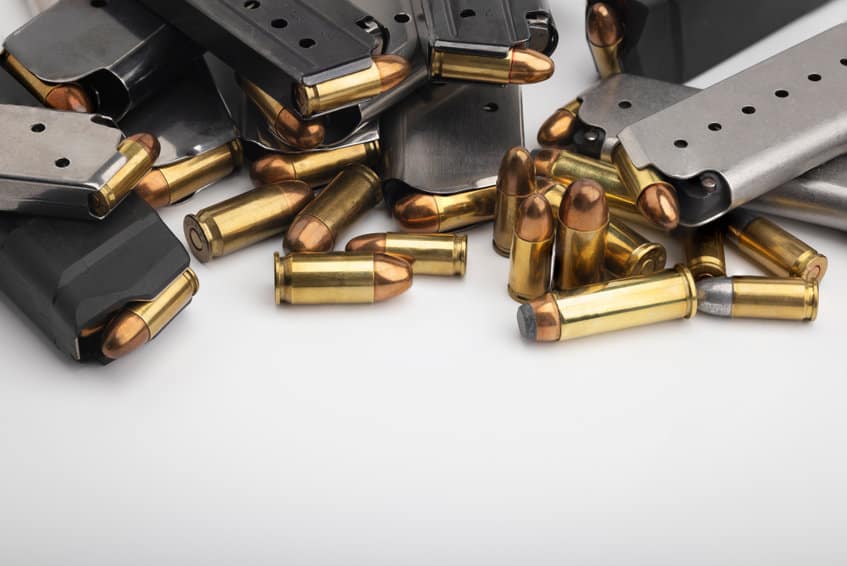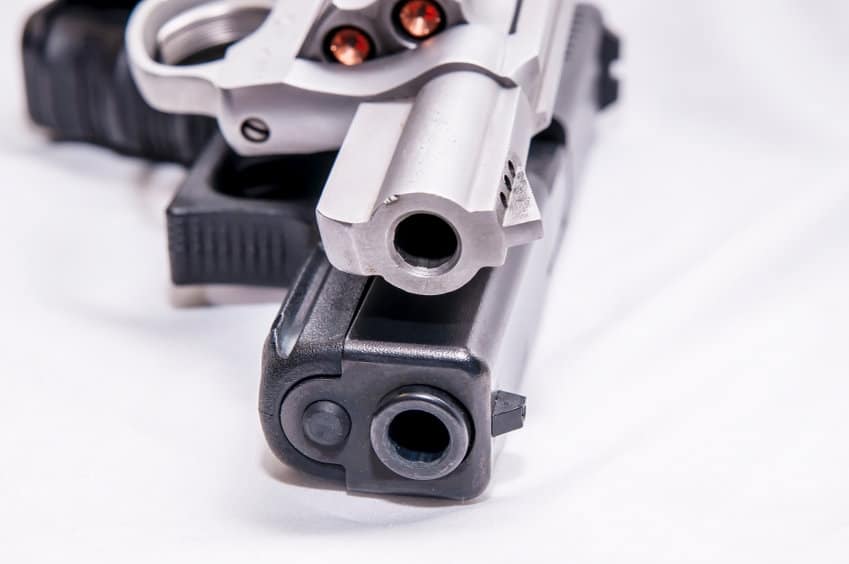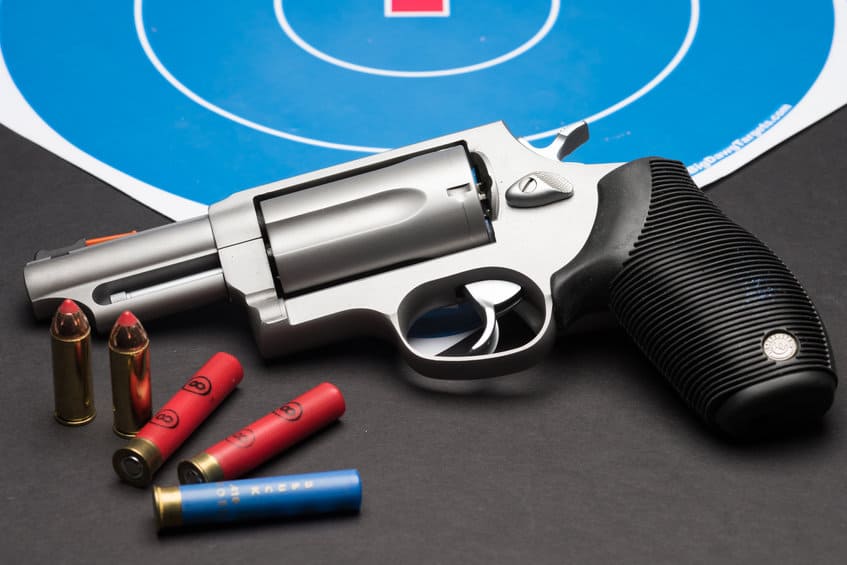The 9mm bullet diameter is the most popular diameter for military and police cartridges in the world. There is one particular cartridge that this is due to, but more on that later. Today we will have a look at the best 9mm EDC round. Both the cartridges and bullet(s) for them.
The world of 9mm cartridges is wide and varied. The most well-known is the 9×19 (also known as the 9mm Luger and 9mm Parabellum), but other examples include the .380 ACP, .38 Super, and 9mm Makarov. There are also a multitude of obscure rounds like the 9mm Largo and 9×23 Winchester that I will touch on briefly. For some calibers, the selection of defensive ammunition is very diverse, and for others, it is extremely limited.
Table of Contents
9×19
Probably the most prevalent pistol cartridge in the world. The 9×19 is the round most of us picture when someone says their gun is chambered in 9mm. First appearing in 1902 in the iconic Luger pistol, the 9×19 gained widespread acceptance after WW1. The 9mm Luger lands in the middle of the handgun performance spectrum, slightly edging out the .38 Special revolver cartridge.
The original loading was a 115-grain full metal jacket bullet traveling at 1200 feet-per-second. The current NATO standard round is a 128-grain bullet at a similar velocity. While FMJ bullets are mandated for warfare, they make poor defensive rounds due to the lack of energy transfer to the target. But, when loaded with a hollow point, the 9mm Luger becomes an excellent defensive cartridge.
There are a multitude of good defensive rounds on the market for the 9mm Luger. The FBI carries Hornady Critical Duty +P 135-grain ammunition. This is a tough bullet meant to penetrate soft barriers without issue. If you are worried about over-penetration, the sibling to the Critical Duty is the Critical Defense. Roughly the same projectile but without the interlock ring on the shank. The ring limits expansion and helps the bullet retain mass. With the ring removed, the Critical Defense typically stops inside sixteen inches of ballistic gel versus the twenty-one plus inches of penetration typical of the Critical Duty. That decreased penetration also means more energy is dumped into the target by the bullet, delivering a greater shock to the system.
Other exceptional rounds are the Sig V-Crown, Federal HST (Hydra-Shok), and Speer Gold Dot. I am particularly fond of the Hydra-Shok as that is what I carry in my 10mm Auto. The Critical Defense is my pick for the 9mm based on the performance reviews I have seen, but this round is hard to find in my neck of the woods. I typically end up carrying Remington UMC jacketed hollow points. Not a flashy round by any means but a reliable and affordable one.
.380 ACP
Developed by John Moses Browning in 1908 to fill the gap between the .25 Auto and the .45 Auto, the .380 has been a popular defensive round ever since, with some seeing service with various militaries during the Second World War. The cartridge lags somewhat behind the 9mm Luger with lower bullet weights and velocities. The average .380 projectile is 80-100 grains and leaves the muzzle at roughly 1000 feet per second.
Many of the same bullet designs that are available for the 9mm Luger are produced for the .380 as well. This selection includes Hornady Critical Defense, Sig V-Crown, and the Federal HST. All are good choices. I would lean towards the Federal HST if I carried a .380, but the two people I know who do carry a .380 both load theirs with the Hornady Critical Defense.
Incidentally, the Federal HST is the first .380 load to pass the FBI ammunition test protocol. The test measures gel block penetration after passing through various barriers. A round must penetrate more than 12 inches but less than 18 inches to pass.
.38 Super
The firecracker of the 9mm’s, the .38 Super was introduced in 1929 to give law enforcement a performance edge over the .38 Special revolvers common to the era. Pushing a 124-grain bullet at 1300+ feet per second, the .38 Super approaches .357 magnum velocities in an autoloading pistol. Early pistols in this caliber tended to suffer from accuracy problems from poor chamber design, but this has been corrected in newer weapons.
The semi-rimmed case of the .38 Super does not feed well through double-stack magazines but makes a great carry caliber in a single-stack weapon like a 1911. The selection of defensive ammunition is limited in .38 Super, but Underwood and Buffalo Bore load 124-grain hollow-point rounds at 1350 fps. Freedom Munitions, Winchester, and Corbon also produce loads for this caliber. Except for Winchester and Freedom, the other companies load their ammo to maximum spec. The .38 Super would be my pick for the best EDC 9mm cartridge for hunting. Please spend the time to acquire proficiency with this caliber if it is your choice to carry.
Other Calibers
Some other calibers for consideration are the 9×18 Makarov and the 9×23 Winchester. The Makarov has similar performance to the .380 ACP, and Hornady loads their excellent Critical Defense ammo in this caliber. The 9×23 Winchester was designed for competitive shooters wanting to use a double stack magazine and still get .38 Super performance and capacity. Jacketed hollow-point ammunition is available from Buffalo Bore and Winchester.
If you have one of the obscure 9mm cartridges like the 9mm Largo, 9×18 Ultra, or 9mm Browning Long, please do yourself a favor and acquire a 9mm Luger pistol. While powerful enough for defensive use, no one produces defensive ammunition for these calibers. If you absolutely must carry one of these, have a reputable custom loader create some hollow-point loads for you. Otherwise, carry FMJ bullets and be aware that the bullet will travel well beyond its intended target.
Final Thoughts
It is a foregone conclusion that the 9mm Luger is the undisputed best EDC 9mm cartridge. Between bullet selection, firearms availability, and performance, this round hits all the sweet spots. The .380 is not a bad choice for the same reasons, and the smaller framed guns make deep concealment easier. Whichever round you choose, remember to get proficient with it.
Until next time.




